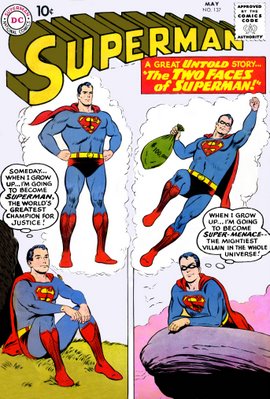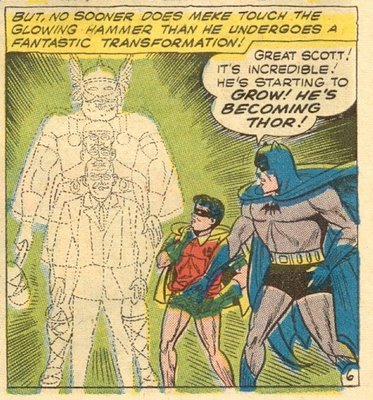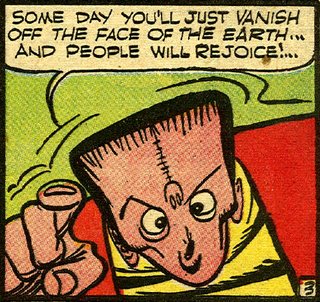Overall, these stories don't move the character forward. Stan still seems to be struggling to find someone tough enough to fight Thor to a standstill, and when he does find a worthy foe, he simply lets the Thunder God appeal to Odin for assistance. This is of course Deus Ex Machina writ large.
In JIM #91, Thor faces Sandu the Sorceror, whose normal powers of ESP and levitation have been enhanced a thousand times by Loki. He starts by robbing banks by teleporting them to a location where he can take the money at leisure. But he quickly realizes that the world is helpless against him and decides to become its ruler. However, when it appears that Thor is about to be killed Odin sends him a belt that makes him even stronger. Sandu at one point transports Thor's hammer to another dimension, and seemingly has him helpless. But he foolishly tries to take control of the hammer and in his attempts he expends his magical power, resulting in the hammer returning to Earth.
Loki battles Thor personally in JIM #91. But, amusingly, there is a subplot involving a wounded gangster who needs Don Blake to operate on him, just as in JIM #89, only two months earlier. Once again a major part of the plot involves separating Thor from his hammer. This time, Thor travels to Asgard and fashions different hammers from wood and stone around him to defeat his enemy. However, there is one odd thing; despite being separated from his hammer for a long time, he does not revert to his Don Blake identity. Perhaps the 60-second limitation only applies on Earth?
In JIM #92, Thor again battles the communists. Are we seeing a pattern here? Aliens and commies and Loki, oh my! Chen Lu, a Chicomm scientist, turns himself into the Radioactive Man. He hypnotizes Thor and forces him to discard his hammer. However, this actually works to Thor's advantage as when he reverts to his Don Blake identity he is no longer under the Radioactive Man's control. He locates the hammer at the bottom of the Hudson and (somewhat unbelievably) swims down to the bottom to retrieve it. With his hammer back he sends the Radioactive Man back to China inside a tornado, causing a nuclear explosion there.
It's Loki's turn once again in JIM #93. He manages to turn Thor evil by distracting him so that the hammer conks the Thunder God on the noggin, resulting in a personality change. Thor comes to Asgard and frees his evil brother. Then they return together to Earth, where Thor destroys many famous landmarks, like the Golden Gate Bridge, the Taj Mahal, the Eiffel Tower and the Leaning Tower of Pisa. A delegation from the United Nations comes forward offering mankind's surrender, but Loki wants control of Asgard. The delegation turns out to be Odin and other gods in disguise, who manage to restore Thor's original, good, personality, and he defeats Loki.
More about →


































